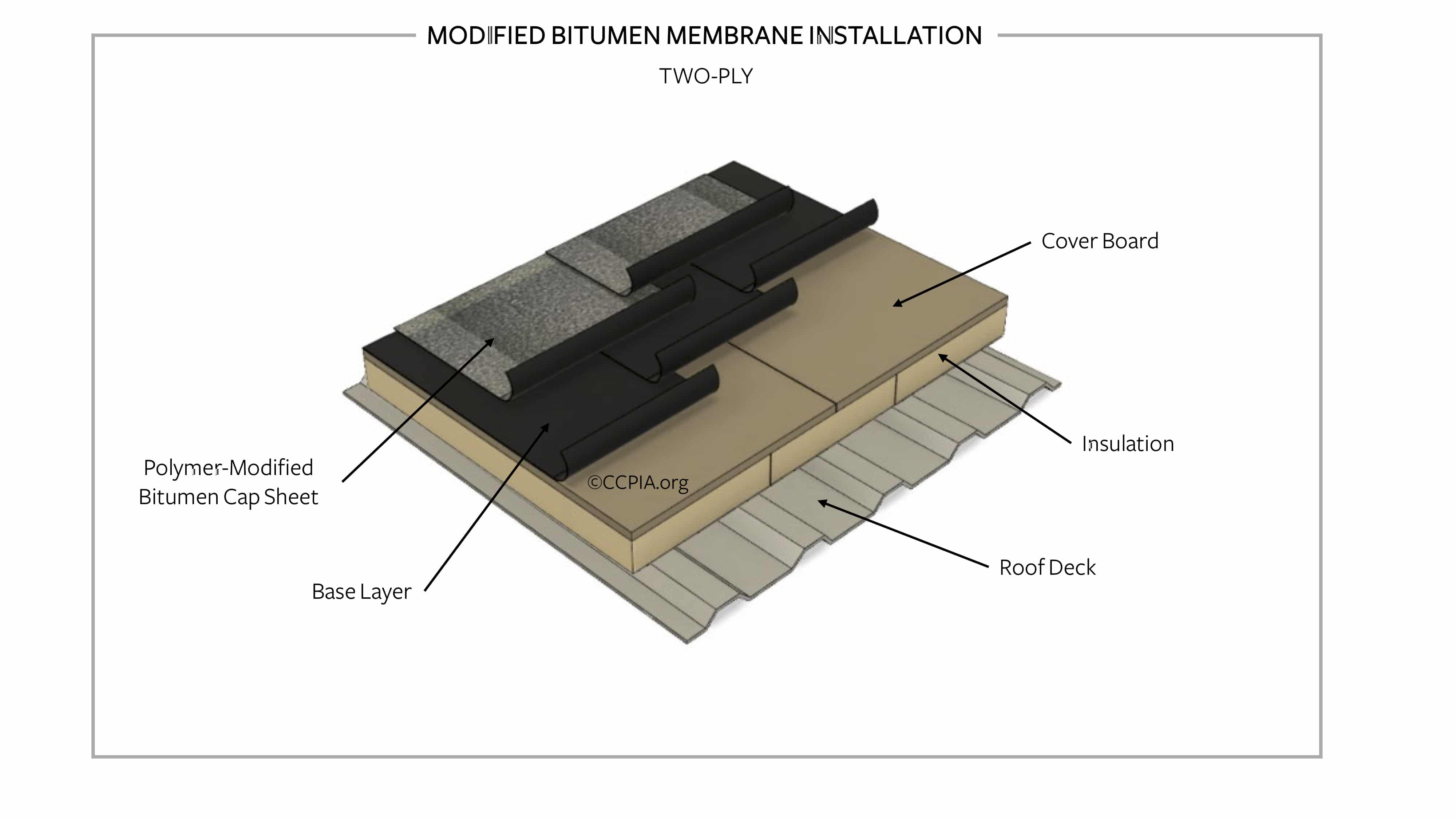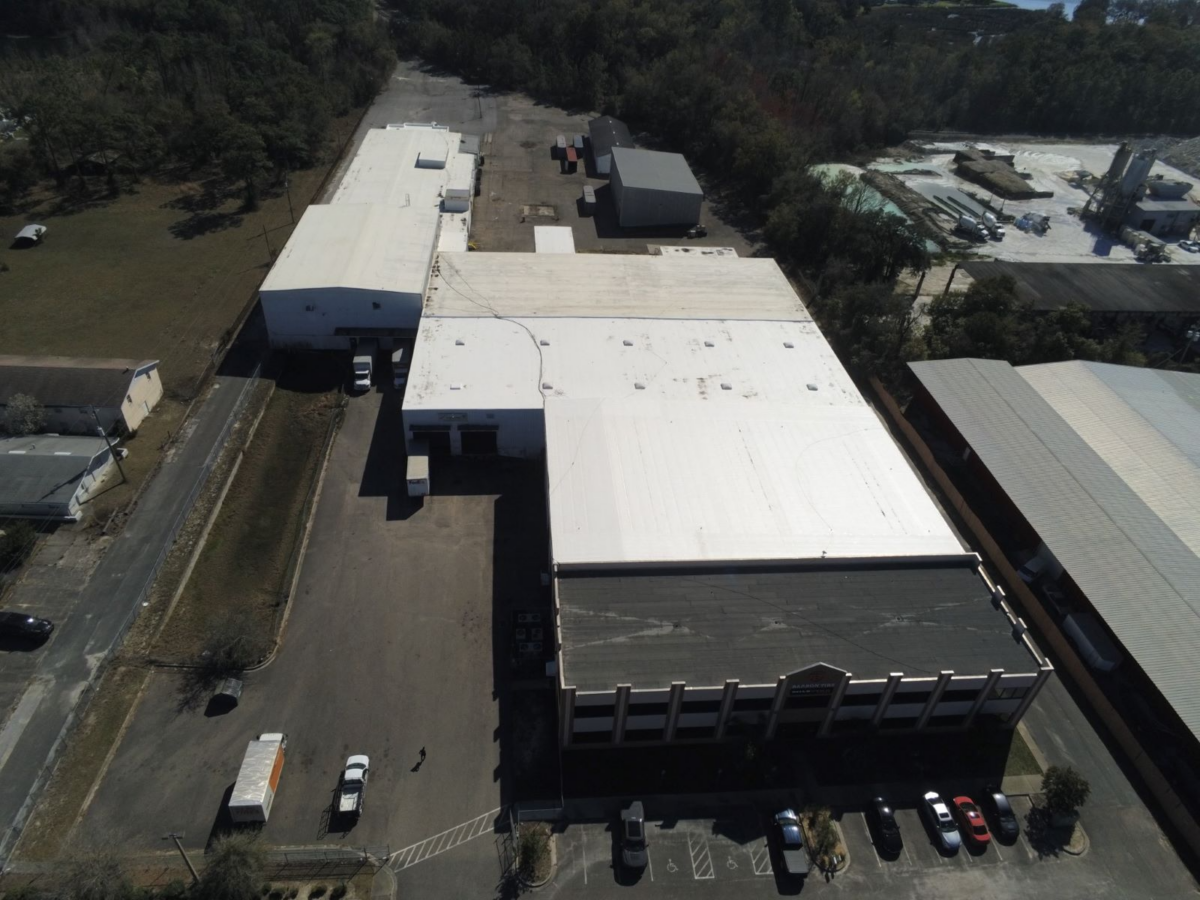Is Modified Bitumen The Right Choice For Your Commercial Roof?
The most common commercial roof system we see in the field is Modified Bitumen (commonly referred to as “Mod-Bit” or “torch down”). Modified Bitumen roofing is an asphalt-based roofing membrane designed for buildings with low-slope or “flat” roof structures. Engineered modified bitumen roofing membranes originated in the 1960’s and have been used successfully in the United States since 1975.
Never judge a book by it’s cover! Though this is now considered an older style system compared to the industry standards offered today, Modified bitumen is tried and true and has a life expectancy up to 20 years.

Modified Bitumen Is A Five Layer System:
- Insulation – Used to provide “R” value, or thermal resistance, for temperature stability of the roof system.
- Modified Base Sheets or Plies – A 2-ply mod-bit system with a granulated cap sheet is roughly 240mm thick or more. Compared to a single ply TPO roof membrane is typically 60mm.
- Modified Bitumen Membranes – Factory fabricated sheet membrane composed of co-polymer reinforced with polyester or fiberglass
- Adhesive – Waterproofing material with a bonding agent applied either hot or cold
- Surfacing – Provides UV protection and weathering resistance
Have A Question About Roof Coatings? Request More Info:
Thickness – A modified bitumen roofing system is one of the most trusted roof systems because of its inherent thickness. A 2-ply mod-bit system with a granulated cap sheet is typically 240 MILS thick or more. On the other hand, a typical single-ply thermoplastic roof membrane is often 60 MILs. Where membrane thickness is a concern, modified bitumen is the winner because of its inherent thickness.
Durability – Mod-bit stands up to foot traffic very well. While no roof membrane should serve as a patio or a work platform, the reality is people often treat flat roofs like a deck. With a granulated cap sheet, modified has a better chance of standing up to foot traffic than other systems.
Repairability – No roof lasts forever, at some point in time you will have to get your roof serviced or even repaired. Unfortunately, your average handyman doesn’t know which repair products are compatible with every roof system. They will typically reach for “wet patch” or “roofing cement” to slap some tar in an effort to patch that emergency leak. Those products are often not compatible with single-ply systems, but they are often formulated for asphalt-based systems like modified bitumen. It may sound simple, but your typical off-the-shelf roof repair products work well with the modified bitumen roof system.
I have a modified bitumen roof system, what are my options?
When it comes to re-roofing options for a modified bitumen roof there are several different options depending on the exit strategy in the property and the goal at hand.
There are two different types of Modified Bitumen Roof Systems: Self Adhered and Torch Down
Self Adhered as the name implies comes with an adhesive backing similar to 3M tape on the base and cap sheet. It is applied using weighted rollers per manufacturing specifications. Where the Torch Down can have a mechanically fastened base or a self adhered base sheet and the cap sheet is adhered using a torch. On rare occasions you see two base layers to add more rigidity to the roof which is seen less frequently due to the labor and material cost.
Comparatively, mod bit is used less today due to the amount of weight on the roof, cost of material, it has a lower R value and reflectivity due to it’s dark colors (typically black), and warranty options when compared to industry standards today such as TPO.
We frequently see building owner’s switching over from mod-bit to TPO or a coating before they remove & replace a mod-bit roof. Where building code allows, you will more often see owner’s do a TPO layover, or a silicone or acrylic coating, in order to extend the life of the existing roof and enjoy massive cost savings. Check out our short video to get a better idea of what re-roofing options are the best fit for you.



